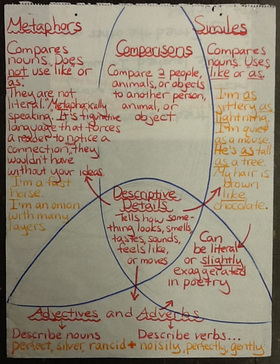
Many poems use comparisons and other descriptive details to help the reader imagine what the poet is writing about.
One type of comparison is a simile. Those Geiko ads use funny similes to make you remember them. They compare funny things to how happy their customers are by stating, "Our customers are happier than..."
Can you remember any of their similes, or write your own? Answer in the comments below.
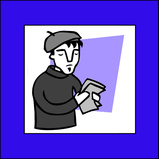
To get ready for MCAS, we've been studying a new genre: Poetry. We read LOTS of different types of poems, picked out a few favorites, and started analyzing them.
The time has finally come to write some poems! First we thought about our favorite color, objects that are that color, how they move, and how our color makes us feel. We wrote the nouns (objects) on yellow paper, the verbs (movements) on blue paper, and the emotions (usually adjectives) on orange paper.
The results are short pieces that have so much going on so quickly that they can make the reader feel like they are dreaming!
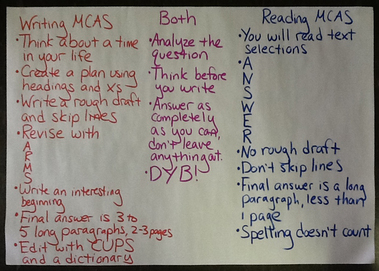
In 4th grade, you have 2 different types of MCAS tests to take in March.
The first is the writing MCAS test on March 19. This is the test that you need to write a 2 to 3 page story about something that happened to you. In the past, the question has been to write a story about a snow day, a story about meeting a friend, a story about being helpful, and so on.
The other test is the reading MCAS test, which will be on Friday, March 22 and Monday, March 25. On this test, each day you will read a selection (fiction, nonfiction, poem, traditional literature, or a play) and then answer about 8 multiple choice questions. Then you'll read a second selection and answer multiple choice questions, and a third and answer multiple choice questions. Each day one of those selections will have an open response question. You'll need to write up to a one page response to the question. It usually asks why a character did something, or in nonfiction it will ask you to describe some of the information.
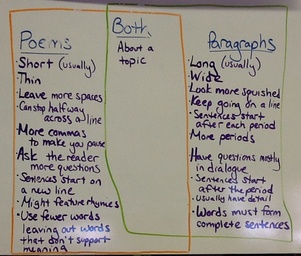
There are many differences between poems and paragraphs. They look different, they sound different, and they are written for different reasons. What is your favorite poem, and why do you like it?
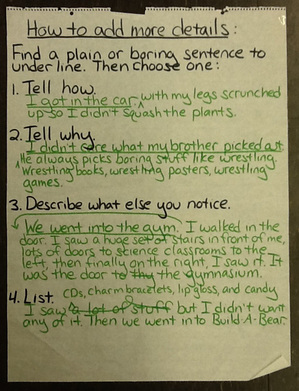
Have you ever thought, "I don't know how to add more details?"
Here are four different ways to do it!
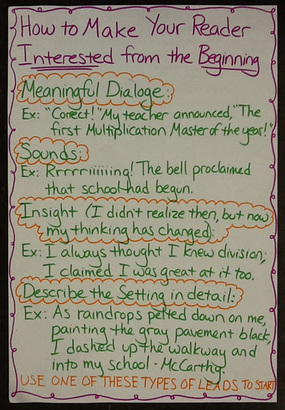
Your first MCAS test for the year will be on March 19. In the past, the long composition (writing) test has always been to write a story about something that's happened to you.
Here are four great ways to start your story, instead of the boring old, "One day..."
Choose one of these start
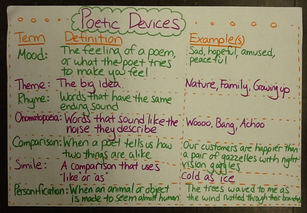
MCAS is just two weeks away, and there's always a poem to read and answer questions about.
Over the years, there seems to be the same 6 terms asked again and again. These are the terms you can expect to see on your MCAS test. Have you ever read a poem with any of these poetic devices?
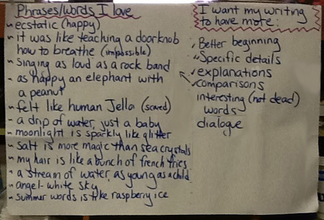
After we took some time to read samples of real kids' MCAS tests from years past, you had some questions.
There were parts of these students' stories that stuck with you. That's because these students are good writers. They know tricks to make their writing not just correct, but interesting. These are the kids who are earning 5 out of 6 points and 6 out of 6 points on their revisions.
Here are the phrases you thought were the most interesting, and things you want to improve in your own writing. We did a lot of work on those last two (check the comic strips you wrote for dialogue and our Word Wall for interesting words) and we will definitely work more on those top 4 over the next 2 weeks!
So far this year you've learned how to write a narrative when you want to tell a story, and you've learned how to write non-fiction when you want to share information. Each type of writing is different, yet the process for writing is mostly the same!
Good writers:
1. Analyze the question (or prompt) that they have to write about.
2. Create a plan (either a T chart or an outline).
3. Write! Skip lines so if you need to change something later you have room.
4. Revise using ARMS.
5. Copy over your final draft and edit using CUPS.
Here are those ARMS and CUPS that help you remember what to do when you revise and edit:
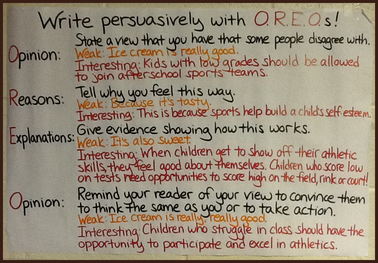


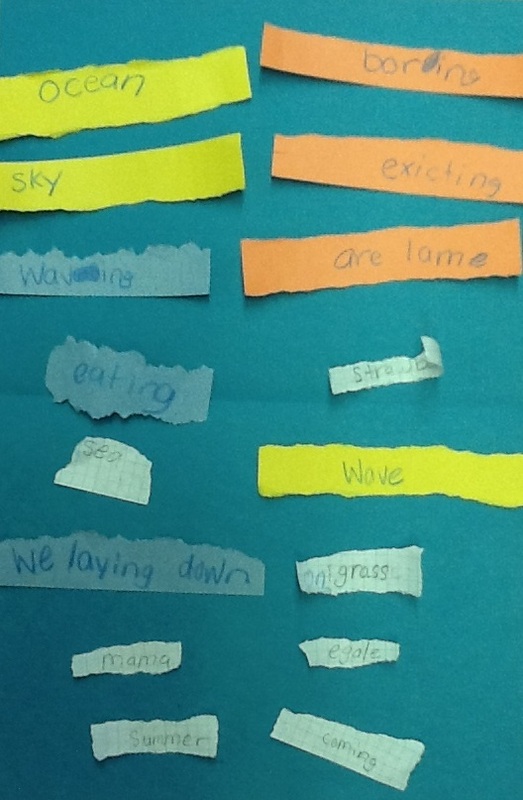
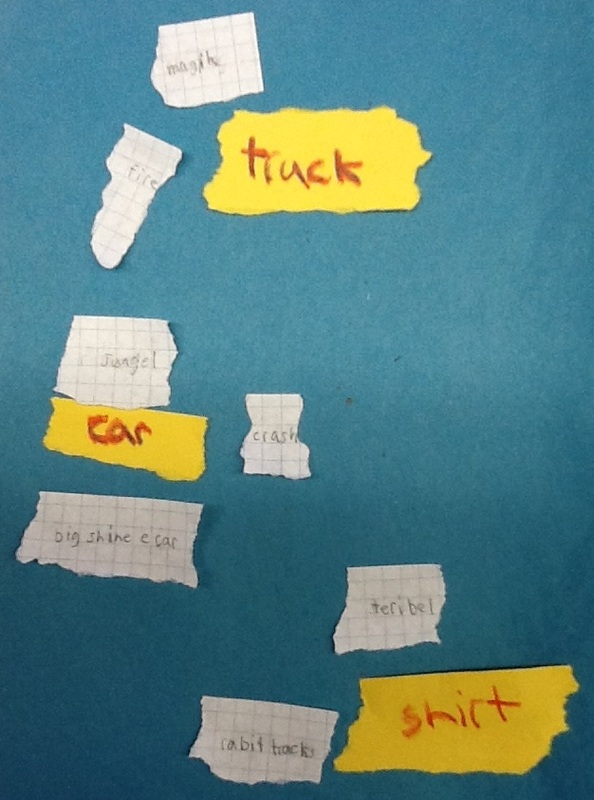
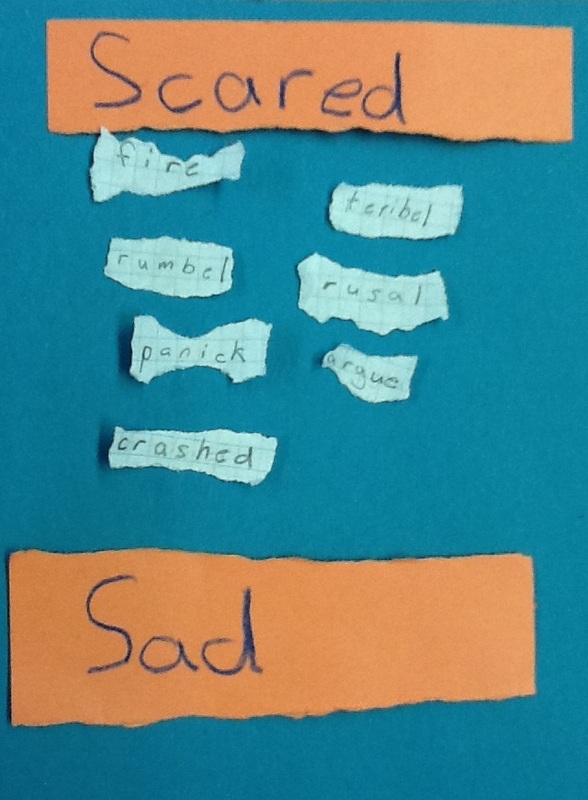






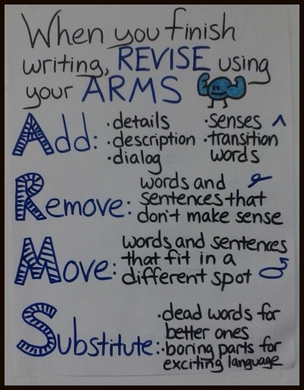

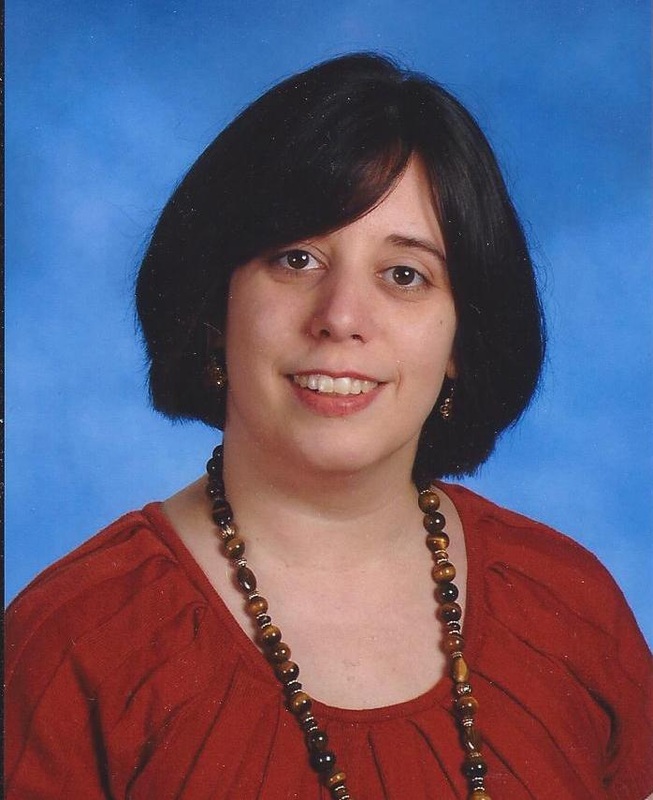
 RSS Feed
RSS Feed